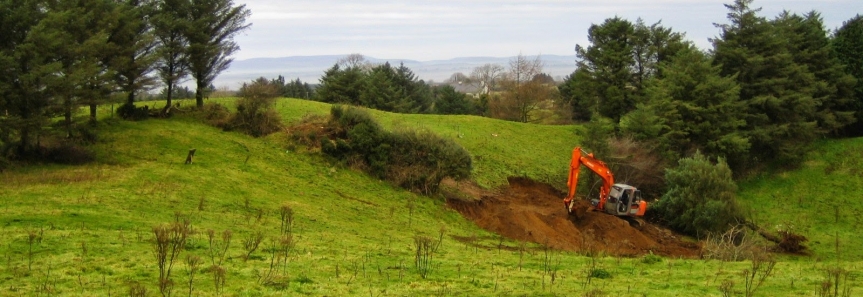Mitigation and Monitoring

The application of mitigation measures to address significant impacts on ecological features is a crucial element of our work. It arises in many aspects of our day-to-day work such as ecological impact assessments, appropriate assessments and species-specific surveys and impacts assessments (bats, white-clawed crayfish, etc).
Mitigation comes in many shapes and forms and ranges from small-scale add-on measures on construction sites and provision of bat and bird box networks to larger more complex habitat and species management plans, badger sett exclusion, mammal underpass design, light spill management and intensive supervision by Ecological Clerks of Works (ECoW). Mitigation is not exclusive to construction works and we find that much of our creative and informed contribution to development design is early in the development planning process when proposed development layout, function and landscape design is being developed. Mitigation is often most cost-effective when addressed at the design stage and Scott Cawley ecologists are very experienced at communication within multidisciplinary teams to ensure that the best solutions are found when it comes to addressing significant impacts on ecological receptors.
Avoidance of impacts precludes the need to mitigate and Scott Cawley ecologists are able to advise clients on how best to avoid impacts by making the best spatial and temporal choices. In many cases we have saved clients months of delay and costs of further ECoW supervision by ensuring that works are carried out at the best time of year or that development design is able to avoid certain sensitive areas.
Beyond mitigation, compensation for the unavoidable loss of habitat or for other impacts on species occasionally necessary. Whilst the majority of projects, if properly managed and informed by ecologival advice, should be aiming to avoid this technique, it is sometimes inevitable. Scott Cawley have designed, supervised and delivered compensatory measures for a range of project types. Notable examples have included provision of artificial bat roosts within new structures for Lesser Horseshoes bats in road schemes (N17 Tuam) and residential projects (Brown long-eared Pipistrelle bat species roosts) and design and installation of several artificial badger setts for road, rail and residential developments. Larger examples include the design and delivery of over 20ha mudflat habitat at Stagrennan Polder in the Boyne Estuary on behalf of Drogheda Port Company.




